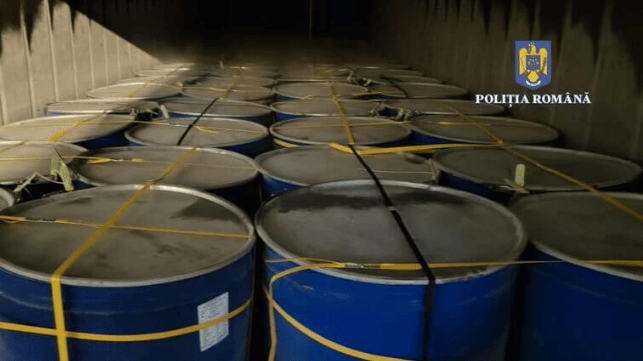Romanian Police Set Record, Seizing 16 Tonnes of Cocaine-Fruit Pulp Mix

Drug smugglers have to be inventive in order to get their goods past customs, and have disguised shipments in all forms of containerized cargo - machinery, bananas, juice bottles, car bodies, even slabs of marble. But Romania's customs police appear to have found something different: they have seized an unknown quantity of cocaine hidden in 71 barrels of frozen fruit products. This would be unexceptional, except that the cocaine is mixed with 16 tonnes of fruit pulp. It will take time to determine how much of the pulp is cocaine, but the authorities believe that it may be a new record.
"The experience of other agencies and other states that have faced such situations lead us to believe that there can be a drug concentration of between five and 20% contained and concealed in such products," said Eduard Miri?escu, first deputy of the General Inspector of the Romanian Police.
The cargo arrived at the Port of Constanta and was shipped to Aiud, a town in central Romania, where the pulp was moved into a refrigerated truck. The final destination for most of the cargo was in the Netherlands - a hub for cocaine distribution in the EU - but it was intercepted by the Romanian authorities first. The nation's customs enforcement agency, DIICOT, also found four barrels and 88 boxes of similar frozen fruit product stored at a warehouse in Aiud.
Two Romanian nationals, aged 33 and 36, were arrested in connection with the seizure. They face a court hearing in Constanta on possible pre-trial detention.
The EU has a thriving and profitable cocaine market, and in 2022, EU nations reported 84,000 seizures totaling 323 tonnes - a record amount for the sixth year in a row. Massive quantities of the drug flow through Rotterdam, Antwerp and Hamburg every year, and seizure volumes have risen in parallel: last year, authorities in the Antwerp-Brugges port region alone seized more than 120 tonnes, about one third of all cocaine seized in Europe. As interdiction rates rise, smugglers have begun looking for smaller ports to use in order to evade detection, according to EU authorities - regional ports like Constanta.
